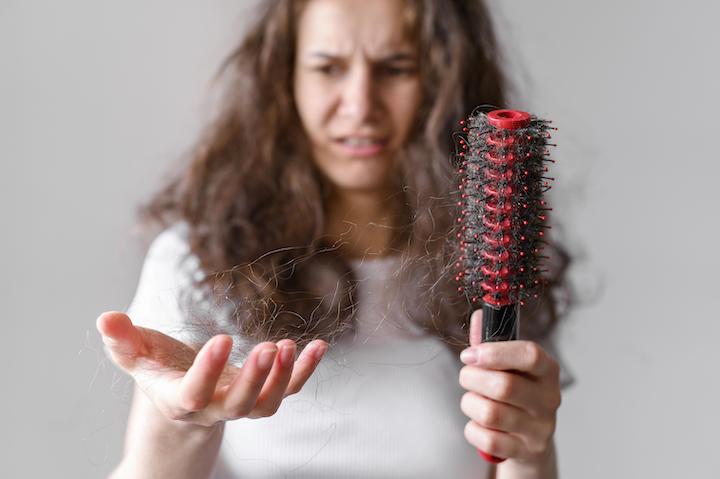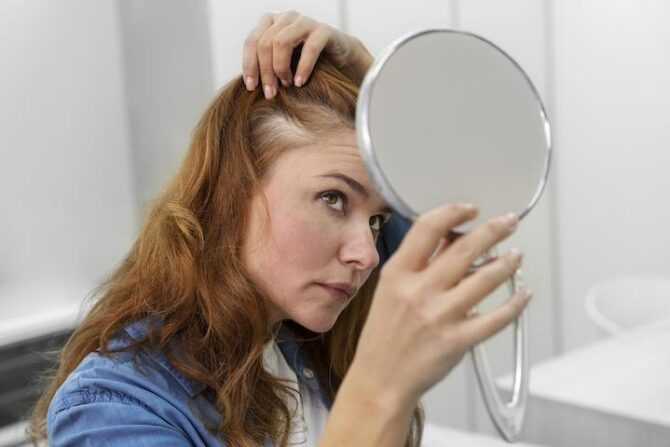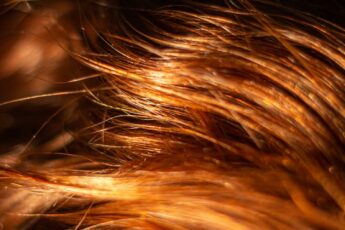Okay, so let’s get real for a second. Have you ever run your fingers through your hair and thought, “Whoa… that’s a lot more hair than usual”? Or maybe you’ve spotted tiny broken pieces sticking out like little rebels, and your first thought was panic. Yeah, same. I’ve been there—staring at my bathroom floor, wondering if I’m losing my hair for real.
The tricky part? Understanding hair shedding vs breakage. They can look almost the same, but they’re very different things. Knowing which one you’re dealing with can save you a lot of stress—and prevent you from doing the wrong thing for your hair.
So, let’s sit down, have a little chat, and I’ll walk you through it. I’ll share what I’ve learned, some things I messed up on, and what actually helps. By the end, you’ll feel like you’ve got a cheat sheet for your hair.
Table of Contents
Key Takeaways
- Shedding is normal; breakage means your hair shaft needs care.
- Shedding comes from the root; breakage is along the hair shaft.
- Gentle care, diet, and hydration help reduce shedding.
- Protective styling, limiting heat, and deep conditioning prevent breakage.
- See a professional if hair loss seems extreme or unusual.
What Is Hair Shedding?
Alright, shedding first. Honestly, it freaked me out the first time I really noticed it. You see hair everywhere—on your pillow, in your brush, even in your food (ugh, gross, right?)—and you start thinking the worst. But shedding is actually completely normal.
Hair has a cycle: it grows, rests, and then eventually falls out so new hair can take its place. On average, we shed about 50–100 hairs a day. I know, seeing it makes you want to panic, but your scalp is just doing its thing. Think of it like your hair hitting the reset button.
A little trick to check if it’s shedding: look at the strand. If it has a tiny white bulb at the end, that’s hair coming out from the root. I remember the first time I noticed these bulbs—I actually got curious instead of panicking. It felt like, okay, my hair is just renewing itself.
Some common triggers for shedding:
- Seasonal changes: For me, I lose more hair after summer. I think it’s because my scalp had to deal with sun, sweat, and everything else.
- Stress: Oh boy, this one’s a biggie. A busy week, lack of sleep, or emotional stress can make hair fall faster. I had one particularly rough week last year where I barely slept, and my shower drain looked like a hairball convention.
- Diet: Low protein, low iron, or sudden diet changes can increase shedding. My personal experience? Skipping meals while on a tight schedule definitely made my hair shed more.
- Hormones: Pregnancy, postpartum changes, thyroid issues—you name it. Hormones really do have a say in your hair life.
Here’s what I started doing: I kept a mini diary. Each morning, I’d glance at how much hair was on my pillow or in my brush. Seeing patterns helped me calm down and understand what’s normal for me. It’s a small thing, but trust me—it helps a lot.

What Is Hair Breakage?
Breakage, on the other hand, is kind of a drama queen. Unlike shedding, it doesn’t come from the root—it happens along the hair shaft. Basically, your hair is snapping somewhere in the middle, leaving those little broken pieces sticking out like they don’t want to be tamed.
I learned this the hard way. I was experimenting with a curling wand (don’t ask me why, I was feeling fancy) and suddenly noticed tiny broken strands around my temples. My first thought? Panic. My second thought? Okay, I need to figure this out before it gets worse.
Signs of breakage include:
- Short, uneven hairs sticking out.
- Split ends and frizz that seems impossible to tame.
- Hair that feels weak or brittle.
Some common culprits:
- Heat styling: Curling irons, straighteners, even hot blow-drying. Guilty as charged.
- Chemicals: Dye, bleach, perms, relaxers. I once did a subtle highlight that left my ends rough for weeks.
- Rough brushing: Especially on wet hair. I’ve yanked my hair one too many times—don’t do it, trust me.
- Dryness: Hair that isn’t hydrated snaps easily. My hair used to feel like straw after skipping masks for months.
A quick way to check: gently slide your fingers down a strand. If it snaps mid-way, that’s breakage. Unlike shedding, the root isn’t attached. Think of it like your hair saying, “I’m done here.”
Also Read: 7 Surprising Hair Glaze Benefits You’ll Love
Hair Shedding vs Breakage – Key Differences
This part made everything click for me. Once I understood the difference, my hair routine made so much more sense. Here’s the lowdown:
Location:
- Shedding: hair comes out at the root.
- Breakage: hair snaps along the shaft.
Appearance:
- Shedding: white bulb at the root.
- Breakage: frayed ends, uneven, snapped strands.
Pattern:
- Shedding: constant, but moderate.
- Breakage: sudden spikes, usually from styling or dryness.
Cause:
- Shedding: natural cycle, stress, hormones.
- Breakage: physical or chemical damage.
Honestly, thinking of it like this helped me chill. Shedding is a leaf falling naturally from a tree. Breakage is a branch snapping in the wind. Big difference.
How to Reduce Hair Shedding
Even though shedding is natural, you can make it less annoying. Here’s what I do:
- Gentle washing and combing: Mild shampoo, wide-tooth comb, no yanking.
- Balanced diet and hydration: Hair loves protein, iron, and vitamins. Water helps too. I started keeping a protein shake handy, and I noticed less shedding over time.
- Stress management: Deep breaths, journaling, or yoga. Seriously, stress can make a huge difference.
- Avoid harsh chemicals: Minimize dyes, relaxers, or bleaching sessions during high-shedding periods.
These habits won’t stop shedding completely (and honestly, you don’t want them to), but they make it manageable. Less panic, more control.
How to Prevent Hair Breakage
Breakage takes more care, but it’s doable. Here’s my experience:
- Limit heat styling: Air-dry when you can. Heat protectants are lifesavers. I started air-drying two days a week, and my ends loved it.
- Protective hairstyles: Braids, buns, twists—your hair will thank you.
- Deep conditioning and masks: Weekly masks feel like a mini spa for your hair. I make it a Sunday night ritual—it’s my “me time.”
- Silk pillowcases and gentle brushes: Silk reduces friction, and soft brushes prevent snapping. Game-changer, honestly.
Think of this as giving your hair a little love. It responds amazingly when you’re consistent.
Check Out: Hair Cuticle Damage Signs: How to Tell If Your Hair Is Struggling
When to Seek Professional Help
Sometimes, shedding or breakage can signal something more serious. Consider calling a dermatologist or trichologist if:
- Hair loss is sudden or heavy.
- Bald patches appear.
- Breakage continues even with care.
I did this postpartum, and it saved me a lot of stress. Having a professional look at it gave me clarity and a plan to recover without panicking.

Conclusion
So, the takeaway? Hair shedding vs breakage are not the same. Shedding is natural; breakage is a cry for care. Understanding this changes how you treat your hair and how you react when you see strands falling.
Remember, both can be managed. Observe your hair, tweak your routine, and be patient. And most importantly, be kind to yourself. Hair care isn’t just about your hair—it’s about taking care of you, too.
Frequently Asked Questions
How can I tell if my hair loss is shedding or breakage?
Look at the hair. Shedding has a white bulb at the root; breakage snaps mid-shaft.
Can stress cause both shedding and breakage?
Yes. Stress can speed up shedding and weaken strands, making them prone to breakage.
Will trimming my hair help reduce breakage?
Absolutely. Removing split ends prevents further snapping along the shaft.
Are there products that help prevent shedding or breakage?
Yes! Mild shampoos, conditioners, masks, heat protectants, and silk pillowcases help maintain strong, healthy hair.



